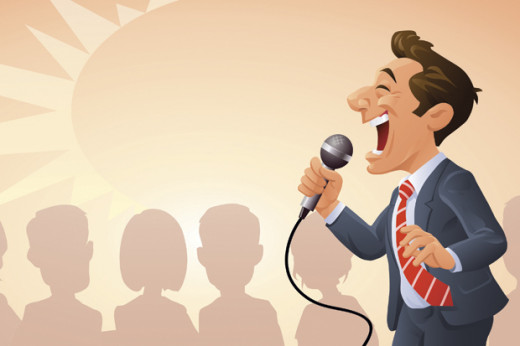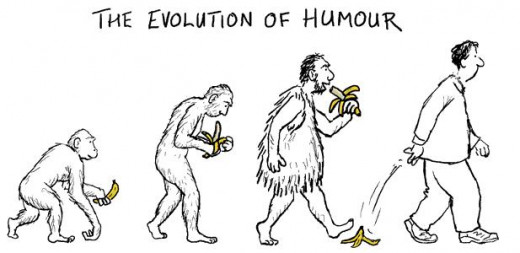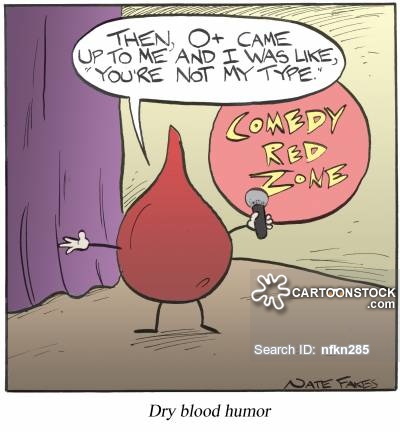All you Need to Know about Comedy: How to be a Comedy Genius

Introduction
I’ve got a joke for you. How do you confuse a blonde? You paint yourself green and thrown forks at her!
I am going to teach you all about comedy today. Most importantly, I want to teach you that comedy is dynamic. You can trust me as a comedy teacher since I’ve been cracking jokes my entire life. We are going to look at the interesting history of comedy, the many theories explaining comedy, and the various types of humor.
History of Comedy
As you all will soon learn, comedy has a unique history. One of the earliest cases of humor known to man is shown by the Sumerians poking fun at the tax collectors around the time when documented history was created. However, in 500 B.C., the Greeks were known for the creation of comedy or as they called it komoidia, which, according to N. J. Lowe, means “performed humour.” Meaning, the Greeks comedies were set on the stage. Komoidia was simply created to relieve the tension from the Greek's upsetting dramas.
Likewise, the Romans had a stage where comedy was performed. Except…this comedy consisted of a poet or musician playing in the center of a coliseum as he or she was torn apart by vicious lions. I never thought comedy could get worse than a fart joke. But, apparently, comedy can sometimes get violent.
When the Catholic church came into power in Europe, around the 4th century, it excommunicated all actors and tried to destroy comedy altogether. Comedy was seen as a sin. Still, around a thousand years later Christians embraced comedy with their “feast of fools,” which is a 24 hour festival where society’s roles were switched.
Speaking of fools, European kings generally had fools who served to make them laugh. These fools were essential to the kings because they were the only ones who could openly mock their kings without punishment. The kings would take these mocking jokes and hopefully learn to better themselves as rulers. The jokes were basically a way of communication for the people to criticize the king. The only problem is that if the fool failed to make the king laugh or went too far with his jokes then he might be killed.
In the 18th century Joseph Grimaldi had acrobats who did dangerous stunts in his shows. So, he created clowns to release the tension between acts. These clowns pretended to be complete simpletons. Their “comedy came from failure,” according to the film “Comedy” by the Films Media Group.
In the 1920s in America slapstick comedy was revived by silent films. Slapstick comedy is comedy resulting from physical actions like smacking a pie in someone’s face. Since silent films are by definition silent they had to rely on slapstick comedy to get a laugh. The first silent film company was created by Mack Senett who established sight gags, or comedy for the eyes. During the Great Depression, the film industry skyrocketed and slapstick comedy became more popularized.
From the history of comedy, we can learn one truth. Comedy is used to release stress. We utilize comedy to relieve ourselves of the atrocities of the world. When we can make fun of the world, we are showing it who the boss is. Comedy is a form of power.

Theories of Humor
The theories of humor are diverse. There are four families of theorized humor. The first family is the social one which includes aggression, hostility, superiority, triumph, and mockery. The second family is cognitive which includes incongruity and contrast theories. The third is psychoanalytical which includes release, liberation, and sublimination theories. The fourth is physiological which includes neurological and muscular theories.
First let us examine the social theory of superiority, created by Thomas Hobbes. The superiority theory “states that we find the misfortune of others amusing,” according to Joel Warner. As an illustration, The Three Stooges come across misfortune all the time and some people cannot help but laugh. What is even more interesting though is that we find it more amusing when someone of high class or a great egoist comes across unexpected misfortune and debases his or herself. Is our laughing at fools a mirthful reaction of superiority?
Now let’s look at the cognitive theory of incongruity, created by Immanuel Kant. The incongruity theory explains that something is humorous when there is an expected outcome but the outcome turns out to be absurd and unexpected. For example, the opening joke I gave you had an unexpected outcome. Most likely you expected a punch line exclusive to blondes, as most blonde jokes are, but I made the jokes inclusive to everyone, breaking the pattern.
Let’s now examine Sigmund Freud’s psychoanalytical theory of humor called the relief theory. Aaron Smuts says that, “Freud describes three different sources of laughter—joking, the comic, and humor—which all involve the saving of some psychic energy that is then discharged through laughter.” Joking involves a release of energy that would have been used to repress hostile or sexual feelings. I do not know what is wrong with Freud but he bases most his theories on sex. Anyway, the comic involves a release of energy that is used to solve an intellectual challenge. And humor involves a release of energy of emotions.
Lastly, we will look at Peter McGraw’s social theory of benign violation. The benign violation theory states that something can only be humorous if it violates a norm without danger to the person who finds it humorous. This theory supposedly encompasses all comedy. Some may argue that it is too broad to find any meaning in the theory though.

Types of Humor
There are too many theories to explain them all; so, I will now focus on the types of humor. The types of humor are boundless; and therefore, we will only go over a few important ones.
An advisor, according to L. Audrieth, is someone who gives “uncalled for advice.” Like if I told you all to take notes on my speech. It is so uncalled for its funny.
Blendwords are a combination of words. For example, fugly is a blendword, which is the combination of fully and glycerin (got ya!).
Blue humor is humor that focuses on easily offensive subjects. Like sex or bodily functions.
Blunders are mistakes that people make to seem foolish. Clowns perform blunders as a part of their job.
Bulls are humorous statements that are based on outrageous contradictions. An example of a bull is “Rick Santorum is the coolest dude I know.”
A catch tale is a story that implies an awful ending but ends with a small declarative statement.
Hyperboles are extreme exaggerations.
Nonsensism is a type of humor that is void of logic and makes absurd observations. For example, if I were to say a unicorn jumped into my bedroom last night and sneezed glitter all over my carpet, causing me to hate Robin Williams in all his movies except for Jumanji, of course, then you all would think I am crazy which would be pretty funny.
Satire is humor that criticizes or makes fun of something. Examples of satirical comedy are: “South Park,” “The Onion,” and “Family Guy.”
Conclusion
There are plenty more types of humor but I don’t want to hold you all hostage for the rest of the day. So, in conclusion, I taught you all about comedy. I did so by giving a brief history on comedy, the different theories of humor, and some types of humor.
Before I go I would like to leave you with one last joke. Long ago Chuck Norris and time had a race. Time is still running.








